
Where to photograph the temples of Angkor at sunrise?
Are you planning to visit the Angkor temples and witness the sunrise? While this phenomenon attracts a plethora of tourists (even at dawn), it offers a magical moment frozen in time that leaves a lasting impression… Discover our practical guide for photographing the Angkor temples at sunrise.
Where to take photos of the Angkor temples at sunrise?
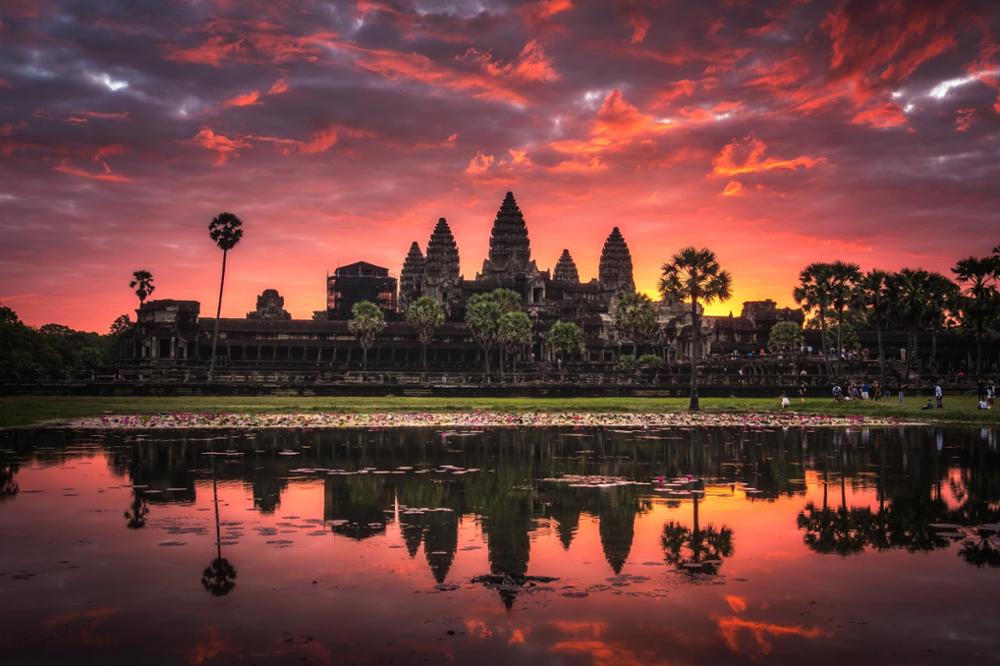
The Cambodian authorities have set visiting hours for all the Angkor temples. Most temples in the park can be visited from 7:30 a.m to 5:30 p.m. However, only four temples are open at dawn, starting at 5 a.m:
- Angkor Wat,
- Sras Srang,
- Pre Rup,
- Bakheng.
Angkor Wat, the must-see spot for sunrise
This is THE most famous Angkor temple. And for good reason, Angkor Wat is the largest temple and the biggest religious monument in the world. Built around the early 12th century by Suryavarman II to honor the deity Vishnu, it was later adapted to Buddhism around the end of the 14th century. Becoming the symbol of Cambodia, it is featured on the national flag and is the country's most visited tourist site. With its main tower and prasats (lotus towers) rising over 65 meters high, its well-preserved Khmer architecture makes it one of the best spots for watching the sunrise.
Where to watch the sunrise at Angkor Wat?
Angkor Wat is, without a doubt, the most popular place to witness the sunrise at Angkor. A quick search for "sunrise Angkor" on Google will confirm this. The most commonly seen photos are all taken from the same spot: by the ponds in front of the temple's main entrance. These ponds offer the perfect conditions to capture the perfect photo. Indeed, the silhouette of the temple and the surrounding landscapes are reflected in the water, creating perfect symmetry. As the sun rises, it appears behind the magnificent towers of the temple.
The northern pond (left basin) is the most popular among photographers. This is where you will see the largest crowds. Why? Because it provides a better angle to capture the temple head-on, showing it in its entirety (with all the towers). Therefore, this is the spot to choose if you’re hoping to take the perfect photo of Angkor Wat reflected in the water.
For latecomers or those wanting to avoid the crowds, alternative spots include the southern pond (right basin), the steps of the library, or the entrance gopura.
Other sunrise spots at Angkor away from the crowds
If you don’t want to be surrounded by crowds and jostled while photographing the sunrise over the Angkor temples, head to the other three temples on the site that are open at dawn:
Pre Rup
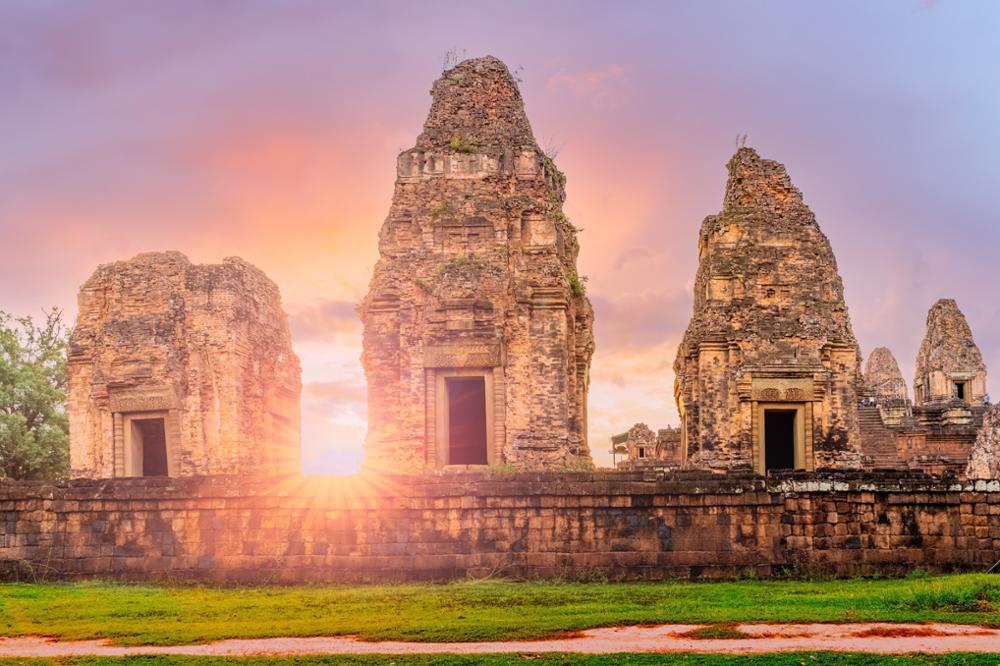
Nicknamed the "Pyramid Temple," Pre Rup is the state temple of King Rajendravarman II. Built in 961, it features a three-tiered structure with five lotus towers. Its name means "change form," referring to a funerary rite. This is one of the reasons historians believe it was used as a crematorium for the royal family.
As one of the best temples in Angkor to view the sunrise, Pre Rup offers exceptional views of the surrounding landscapes, including the rice fields of the Eastern Baray. Additionally, this 1,200-year-old temple was built entirely from brick, laterite, and sandstone, which creates stunning reddish and orange hues when the sunlight hits it during sunrise (or sunset).
Sras Srang
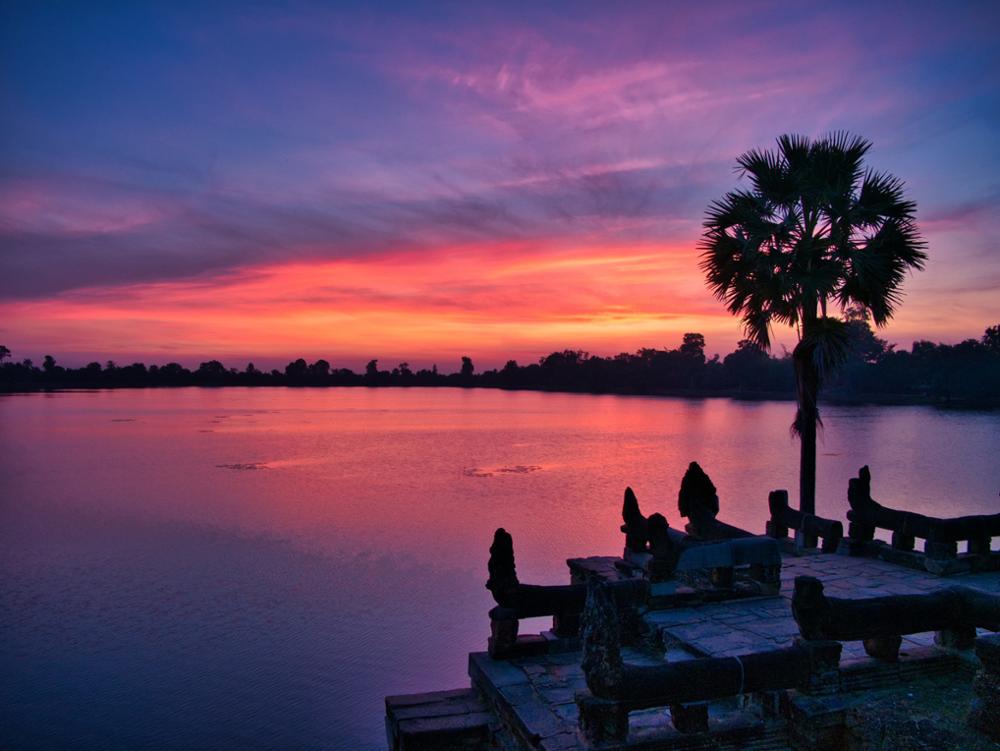
Srah Srang is not a temple but rather a baray (water reservoir) located just in front of the Banteay Kdei temple. Dug in the mid-10th century by Kavindrarimathana, it was later modified by Jayavarman VII in 1200. Used as a royal bath, inscriptions found on the site dating from the mid-10th century suggest that it was also used to provide water "for the benefit of all creatures."
Less visited than most of Angkor’s sites, it offers a peaceful alternative to the crowds at Angkor Wat for watching the sunrise. The best spot to watch the sunrise from Srah Srang is at the western end of the site, where there is a multi-level terrace adorned with Khmer sculptures.
Phnom Bakheng
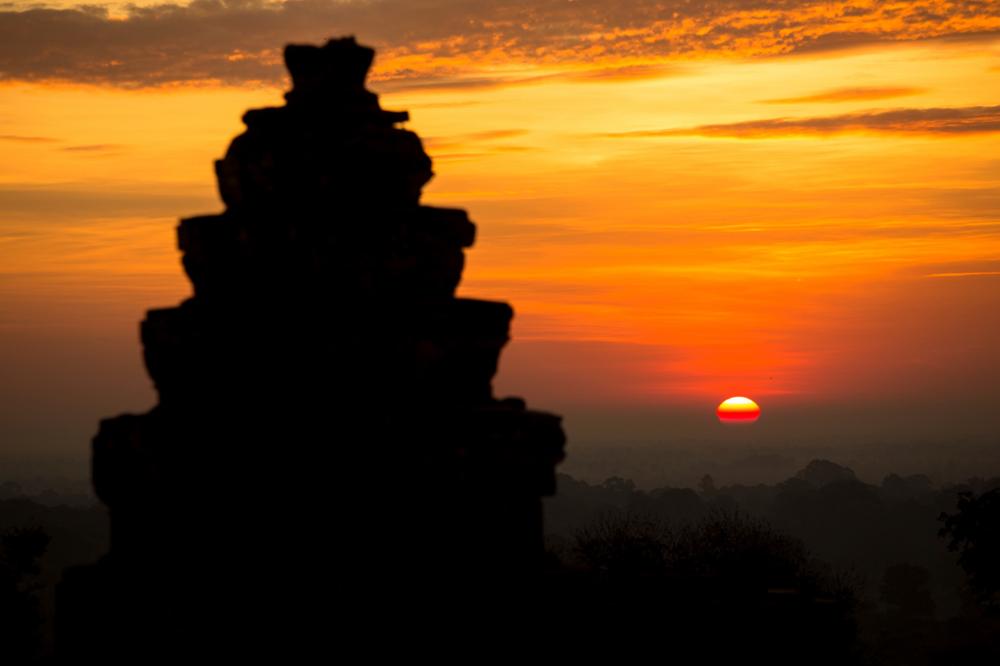
Built around 900 during the reign of King Yasovarman, Phnom Bakheng is the first temple constructed on the Angkor site itself. Built on a hill to honor Shiva and the god-king, it is the prototype of Khmer mountain temples. It features a five-tiered pyramid shape punctuated by 109 towers.
Due to its height, Phnom Bakheng is a popular spot for both sunrise and sunset views. By climbing to the top of the temple, you’ll be rewarded with an incredible view of the surrounding jungle. At sunrise, you’ll be mesmerized by the rays of the sun piercing through the treetops, all enhanced by a mystical ambiance thanks to the morning mist. In addition to the lush vegetation, you can also see the iconic Angkor Wat temple.
Be cautious! The temple only allows 300 visitors at a time, so it’s important to arrive early to secure your spot!
When to see the sunrise over the Angkor temples?
In Cambodia, sunrise and sunset times do not vary much throughout the year. Generally, the sun rises :
- Around 6:30 AM from January to April
- Around 5:30 AM from May to July
- Around 6:00 AM from August to December
As you might expect, you won’t be alone in admiring the sunrise over the Angkor temples. Every day, hundreds, even thousands, of people arrive at dawn to enjoy the spectacle. That’s why it’s essential to arrive early. We recommend purchasing your entry tickets the day before your visit to avoid queuing on the day itself.
Since the Angkor site opens at 5 AM, we suggest getting there as soon as the gates open to be among the first to enter, maximizing your chances of securing a good spot.
Good to know: It’s cold at that hour, so make sure to bring something warm to wear while you wait for the sunrise.
Don’t be in a rush and wait for the sun to truly rise!
Regardless of the spot you choose, don’t make the mistake of leaving too early. Many visitors leave before they even see the sun rise. While the spectacle is at its peak when the sky is painted with soft, warm colors, the actual appearance of the sun on the horizon (between the trees or the temple towers) is also a sight you don’t want to miss!
What is the Angkor equinox?
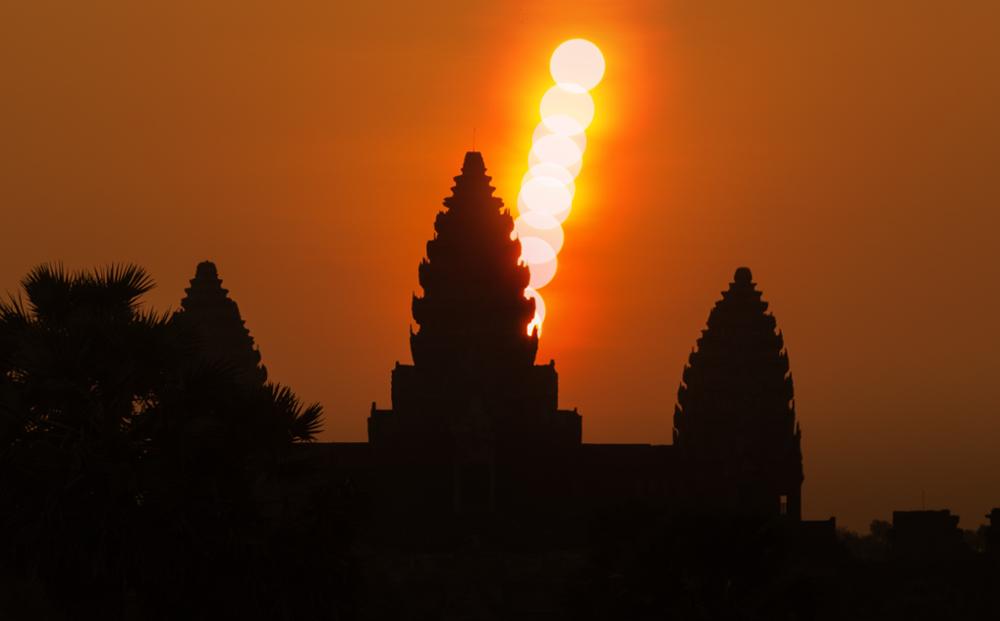
The Angkor Equinox is one of the most awaited events for photographers visiting Cambodia. It refers to the moment when the sun rises directly over the central tower of Angkor Wat, creating a perfect alignment. This phenomenon once again demonstrates the architectural prowess and astronomical knowledge of the Khmer Empire.
The Angkor Equinox happens only twice a year: during the spring equinox (late March) and the autumn equinox (late September). The Apsara National Authority announces the official dates each year. To find out the dates for the Angkor Equinox in 2024, we recommend keeping an eye on the events listed on their official website: apsaraauthority.gov.kh.
Short on time to organize your visit to the Angkor temples?
We recommend hiring a guide to avoid rushing and to benefit from the best viewpoints to capture the photo of your dreams. Feel free to contact us to take advantage of our local guides’ services!
Florine Dergelet